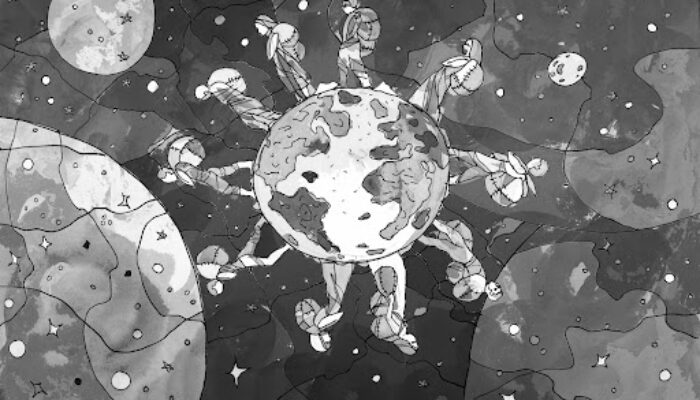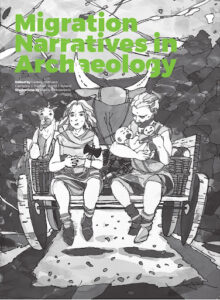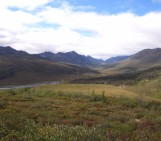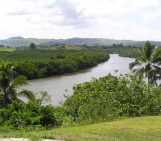
Discoveries like excavations of prehistoric civilizations, shipwrecks with long-lost treasures, forgotten cities, and ancient tombs and temples, paint a vivid picture of archaeology and human history. Yet understanding how cultures evolved is often a more laborious process focused on prosaic finds; pottery shards, tools, implements, skeletal remains, art, inscriptions, pollen or soil samples, among other evidence of the past. Sometimes, in our quest to reimagine past societies, we allow unexpected, unquestioned stereotypes to creep in.
Take, for instance, Erich von Däniken’s ‘Ancient Alien’ hypothesis, which undermines the architectural achievements of so-called ‘backward, non-white’ peoples of ancient civilisations. Instead, the theory attributes grand monuments to extraterrestrial intervention. Similarly, scholars with a Western-centric perspective cast doubt on the navigational expertise and extensive voyages of the Polynesian people. As these voyages occurred prior to the advent of modern navigation tools and seaworthy vessels, they suggest that far-flung Pacific islands were populated as a result of mere accidents. Among the most pervasive stereotypes perpetuated by archaeology, is that of gender — with men as hunters, toolmakers, artists and innovators in prehistory, and women confined to gathering, caregiving, and other domestic responsibilities (read: Gender Stereotypes in Archaeology, Sidestone Press).
On occasion of International Archaeology Day coming up this 21st October, I’d like to reflect upon another stereotype rooted in archaeology that has real repercussions in today’s charged global geopolitical landscape — migration.
Deeply rooted yet poorly documented misconceptions on migration
Can archaeology uncover common misconceptions, challenge stereotypes about migration, and offer a more accurate understanding of historical and contemporary human movements?
In my quest, I stumbled upon the recent publication, ‘Migration Narratives in Archaeology’, edited by Daniela Hofmann, Catherine J. Frieman, and Astrid J. Nyland, illustrated by Nikola Radosavljević, and funded by the Centre for Advanced Study (CAS) in Oslo, Norway. This booklet is based on research across geographies from the steppes of Central Asia to the coasts of Norway during the Neolithic period in Europe, roughly 7000 BCE to 2000–1700 BCE. The excerpts seek to address the deeply rooted yet poorly documented misconceptions about migration and attempt to de-politicise bombastic claims.
For a better understanding of migration through history, I spoke with two of the editors: Daniela Hofmann, an archaeology professor at the University of Bergen, and Astrid J. Nyland, an associate professor at the University of Stavanger.
What are some of the common misconceptions about migration, and where do they come from?
“Our school books only covered recent history, such as European migrations to the Americas and Australia. This forged the misconception that prior to major colonial expansions, global movement was rather limited, with humans spreading out to uninhabited continents initially, and then staying in one place. However, this is not entirely accurate. While mass migrations may have been infrequent, history and archaeology reveal a significant degree of mobility, characterized by frequent smaller-scale group movements,” Daniela Hofmann explains. She adds:
“Another misconception that arises from this colonialist perspective is that migration is inherently destructive, driven by crises, and causing upheaval upon arrival. This is not a universal truth, especially within open social systems where migration can occur with less disruption and shock.”
Interestingly, migration as an explanation model for human interactions and cultural shifts through history has also had its ups and downs.
“The advent of DNA studies and the exploration of genetic data marked a significant turning point in framing migration narratives. Isotopic analyses shed light on the origins of people and their movements, in what could be termed the third science revolution. Yet it’s crucial to note that genetics alone do not encompass the full story of human interaction and migration; individuals create a sense of self and identity through their interactions with others and express this through their possessions,” iterates Astrid Nyland.
Here are some of the key statements from the publication: Throughout history, migration has been an inherent aspect of our social reality. Migrations are not linear processes but foster enduring, two-way connections between people and places.
Mass migrations are not the norm, migrants are not a cohesive group, nor are they driven solely by crises or violence; a range of motivations dictate how people migrate, and why.
Contrary to misconceptions, migrants do not sever their roots when they embark on their journeys; they need not assimilate into new cultures but can coexist while maintaining their unique identities.
Migration, whether in the past or present, stirs powerful emotions

We often imagine people migrating on foot, over land but a lot of tribes migrated or travelled across water – think of the Polynesians populating the Pacific Islands, the Scandinavian Vikings voyaging as far as the Mediterranean and North America, or the Orang Laut trading along Indonesia and Malaysia. (Illustration: Nikola Radosavljević, for Migration Narratives in Archaeology, Sidestone Press)
In the last three decades, the term ‘migration’ has been painted in dark shades by the media and right-wing politics. They perpetuate the notion that migration is spurred by crises, yet ironically, migrants are often depicted as perpetrators of violence, looting, and destruction. The media narrative reinforces fears that migrants will ultimately displace local populations, seize their resources, and snatch their job opportunities. Yet archaeological research indicates that migrants do not displace locals, whether in demographics or culture — the publication highlights the need to debunk these prevailing stereotypes and to appreciate the nuanced nature of migration experiences.
After all, migrants are not a coherent group. Take a look at this list of words: settler-colonist, explorer, pastoralist, seafarer, stowaway, gypsy, nomad, migrant worker, expatriate, documented migrant, economic migrant, evacuee, displaced person, war refugee, climate/environmental refugee, illegal immigrant/alien, asylum-seeker, trafficking victim, tourist/traveller. In a sense, all the words refer to individuals who migrate for a variety of reasons and durations, yet each bears varied socio-political and legal implications. Or as the booklet frames it,
“the same behaviour – changing residence – is valued differently with different words.”
When Astrid Nyland undertook the translation of the publication, she encountered a notable challenge: Norwegian had considerably fewer words to describe migrants compared to English. “I often had to use several Norwegian words to capture the essence of a single English term, because we use language differently. It was a great learning experience because it also put in perspective how language is political,” Astrid muses.
The past is key to the present
Archaeologists, like historians, are often questioned about the contemporary relevance of ‘looking into the past’. To turn James Hutton’s famous phrase around, ‘the past is key to the present’. Archaeological discoveries have provided valuable perspectives for understanding and addressing present-day challenges.
As the world grapples with complex geopolitical shifts, climate change, and civil strife, the movement of people across borders continues to be a central issue. Stereotypes about migrations not only perpetuate misunderstanding but also fuel divisive rhetoric and policies. Rethinking these stereotypes is essential to foster informed public discourse, dispel misconceptions, and promote a more inclusive and empathetic approach to understanding the intricacies of migration.
While much of the spotlight on ‘International Archaeology Day’ will fall upon tales of sunken treasures and royal tombs, Daniela reminds us of an essential truth, “Sensational discoveries, while captivating, often illuminate the lives of a privileged few. Retracing migration tells the story of an overwhelming majority of people in the past, who like those in the present, went in search of a good life, whatever that meant, and wherever it took them.” Migration is a timeless saga that offers a profound reflection of our shared human history.




